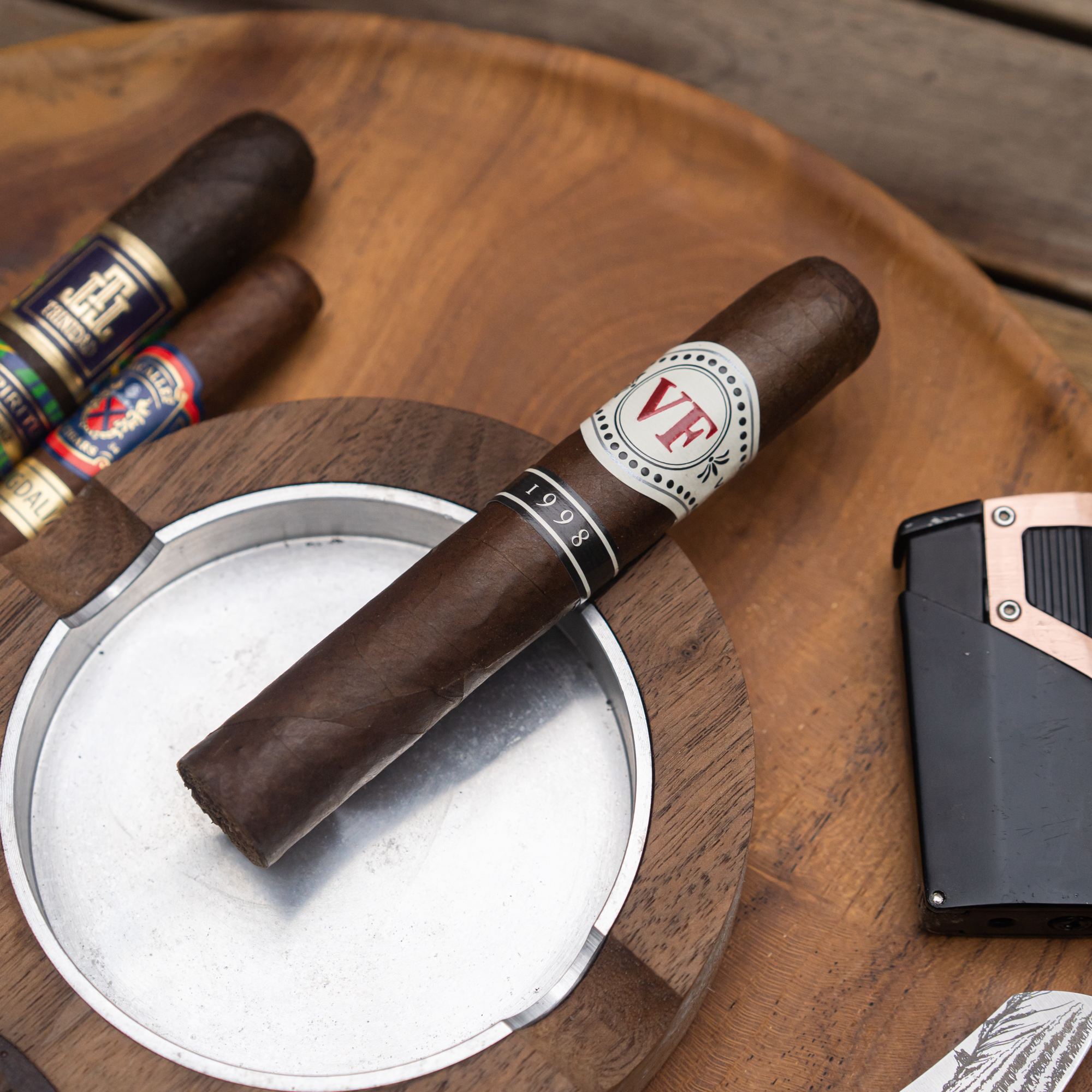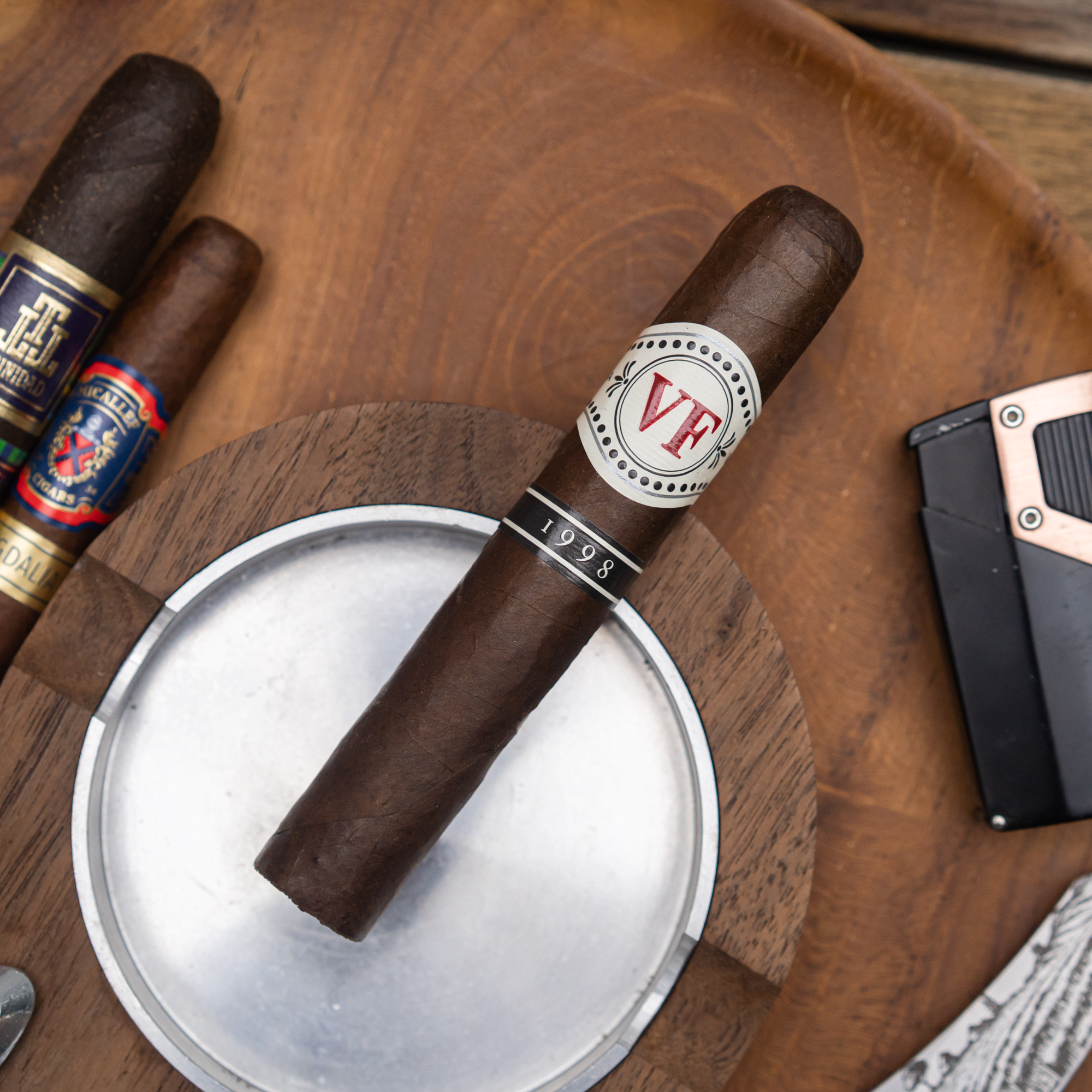Blind Review: VegaFina 1998 VF52

Once a European exclusive brand under the umbrella of Altadis USA, the VegaFina 1998 made its debut in the U.S market back in fall of 2020. To commemorate the birth year of the brand, VegaFina 1998 is a blend containing tobacco from 5 different countries each with a minimum of 3 years of age. Once rolled, they are then aged for another 4 years before releasing it to the consumers.
The VegaFina 1998 comes in 3 different vitola: VF50 (4.5x 50), VF52 (5×52), and VF54 (6.12x 54).
Blend Specifics
- Cigar Reviewed: VegaFina 1998 VF 52
- Wrapper: Ecuador HVA
- Binder: Java Indonesia
- Filler: Colombia, Dominican Republic, and Nicaragua
- Size: Robusto (5” x 52)
- Release year: 2020
Appearance & Construction
Staring at the veiny yet smooth milk chocolate wrapper gives gives me nostalgic feelings, as if I just returned home from trick or treat on Halloween night. I can feel the sturdiness of the build when I pick up the cigar. The wrapper itself is thin, thinner than what I’m used. The jagged imprint of the filler leaves is very visible to the naked eye. However, there is no sign of fragility. Lastly, there is a small empty pocket near the head of the cigar, which I hope won’t affect my smoking experience.

Flavor and Smoke Characteristics
The wrapper gives off a very appetizing scent of vanilla and sunflower seeds. The foot of the cigar enhances the scent with honey and a lingering white pepper spice. After slicing off the cap, I take a cold draw and get dark leather, star anise, and a hint of honey. The draw restrictiveness is around 8/10, which is a little too tight for me. I hope the draw will loosen up once I light the cigar.
When I introduce some fire to the foot, a sweet and herbaceous scent carried within the stream of silky smoke twirl itself around my nose. I take my first puff shortly after and can taste roasted coffee, tree bark, tea leaves, raw sugar, and savory mineral. The retrohale highlights an even darker tone: herbaceous bitter tea leaves and tree bark. Overall, I’m feeling a bit let down by my initial experience. The flavors seem very muddled together and muted on both my palate and the retrohale.
Almost as if there is an invisible line drawn on the cigar marking the beginning of the second third, the smoke becomes extra smooth and creamy. The flavors transform into a more pronounce form of dark leather, tree bark, and vanilla in the front. They’re supported by bitter tea leaves and raw sugar in the back end as the smoke dissipates. Unfortunately, all this creaminess in the smoke backfires as it coats my tongue with a bitter sweet taste that lingers even after I drink some unflavored seltzer. By the half way point of this cigar, black pepper spice finally finds its way to the scene on the retrohale.
In the final third, I taste toasted almonds in addition to the aforementioned flavors. The retrohale becomes more enjoyable as it shifts from black pepper spice to baking spice. Regrettably, this doesn’t not help the fact that my tastebuds are still overwhelmed by the sweet and bitter taste from the awkward flavor combination in the smoke.
Conclusion
This might be one of most unique experience I’ve had in a cigar. However, it felt like there was a constant battle between the flavors. With each puff I took, the cigar highlighted a different flavor note which resulted in imbalanced flavor combinations. The only consistency I observed was the sweet and bitter taste that lingered on my tongue, and without any brighter flavor notes or spice to alleviate that, it ultimately ruined the whole smoking experience.